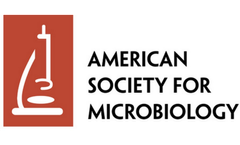Microbial Ecology Articles & Analysis: Older
14 articles found
Operational Taxonomic Units (OTUs) serve as fundamental units in the realm of numerical taxonomy, particularly in the study of microbial ecology. These units can represent various biological classifications, including individuals, species, genera, or even higher taxonomic levels. ...
Potential applications of metagenomics in parasitology include recovery of genomic-epidemiological data and determination of the influence of parasites on the microbial ecology in the gut. Gut health. 16S/18S/ITS amplicon sequencing is a powerful and affordable tool for clinical microbiota analysis. ...
Potential applications of metagenomics in parasitology include recovery of genomic-epidemiological data and determination of the influence of parasites on the microbial ecology in the gut. Gut health. 16S/18S/ITS amplicon sequencing is a powerful and affordable tool for clinical microbiota analysis. ...
The Use of Microbiome Sequencing in Cancer Research A growing body of evidence now suggests that human microbial dysbiosis has a crucial role in cancer development and progression. ...
Introduction to Bioinformatics for Microbial Metagenomics In microbial ecology, metagenomic techniques are now widely utilized to research microbial communities in greater depth, including many strains that cannot be produced in the lab. Microbial bioinformatics may now be used to mine large metagenomic datasets ...
The understanding of microorganisms remains at the stage of morphological observation, description, classification, and physiology. 2) The second stage: Beginning in the 1980s, the development of molecular biology technologies such as BIOLOG technology, phospholipid fatty acid method, DNA fingerprinting, gene chip, etc., realized the direct analysis of environmental ...
Canonical interferon (IFN) signaling controls the response to acute microbial infection through the involvement of STAT1 transcription factors. ...
The understanding of microorganisms remains at the stage of morphological observation, description, classification, and physiology. 2) The second stage: Beginning in the 1980s, the development of molecular biology technologies such as BIOLOG technology, phospholipid fatty acid method, DNA fingerprinting, gene chip, etc., realized the direct analysis of environmental microbial ...
(E) Comparison of relative abundances of significantly different microbial taxa at the genus level. Statistical analyses were performed using the Mann–Whitney U-test with no false discovery rate (FDR)-correction for comparison with DFE+PBS mice (N= 7–9 mice per group). ...
Data were analyzed by using Quantitative Insights into Microbial Ecology 1.8.0 (QIIME) software (QIIME development team; http://qiime.org/)(Caporaso et al., 2010) and Greengenes version 13_5 database (http://greengenes.secondgemone.com). ...
Introduction Lactobacillusspecies are the predominant vaginal microbiota found in healthy women of reproductive age and inhibit pathogen growth by producing lactic acid, H2O2 and anti-microbial compounds1,2,3. Highly diverse Lactobacillus-non-dominant vaginal microbial communities are strongly correlated with genital inflammation, which negatively affects ...
However, understanding and dissecting the complex microbial community structure, composition, spatial distribution and dynamics in ecosystems are highly challenging considering the salient limitations of traditional or conventional culture-dependent techniques. Although with the emergence of molecular methods such as Terminal Restriction Fragment Length Polymorphism (TRFLP), ...
Despite its medical importance, the etiology and microbial ecology of BV remain poorly understood. We used broad-range PCR to census the community structure of the healthy and BV-affected vaginal microbial ecosystems and synthesized current publicly available bacterial 16S rRNA gene sequence data from this environment. ...
In this review we briefly summarize research from process and taxonomic approaches to the study of wetland biogeochemistry and microbial ecology, and highlight areas where further research is needed to increase our mechanistic understanding of wetland system functioning. ...







